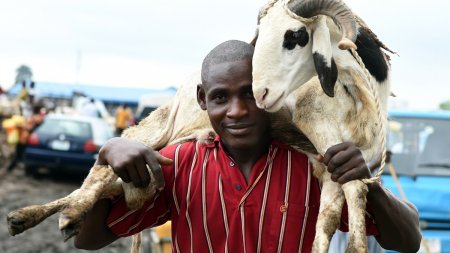Monday, September 12, 2016 is the day Muslims all over the world will come together to celebrate Eid-el-Kabir, Christians are not left behind as many would also celebrate the festival with their Muslims friends.

Here are 7 facts you need to know about the festival.
1. Eid al-Adha is another name for Eid-el-Kabir, the “Festival of the Sacrifice”, also called the “Sacrifice Feast” or “Bakr-Eid”.
2. The festival honours the willingness of Prophet Ibrahim (Abraham) to sacrifice his son, Isma’il (Ishmail) as an act of submission to God’s command, before God then intervened, through his angel Jibra’il (Gabriel) and informs him that his sacrifice has already been accepted.
3. The meat from the sacrificed animal is preferred to be divided into three parts. The family retains one third of the share; another third is given to relatives, friends and neighbours; and the remaining third is given to the poor and needy.
4. In the Islamic lunar calendar, Eid al-Adha falls on the 10th day of Dhu al-Hijjah and lasts for three days. In the international (Gregorian) calendar, the dates vary from year to year drifting approximately 11 days earlier each year.
5. Like Eid al-Fitr, Eid al-Adha begins with a sunnah prayer of two rakats followed by a sermon (khutbah).
6. Eid al-Adha celebrations start after the descent of the Hujjaj, the pilgrims performing the Hajj, from Mount Arafat , a hill east of Mecca.
7. The days of Eid have been singled out in the Hadith as "days of remembrance" and considered the holiest days in the Islamic Calendar.

Here are 7 facts you need to know about the festival.
1. Eid al-Adha is another name for Eid-el-Kabir, the “Festival of the Sacrifice”, also called the “Sacrifice Feast” or “Bakr-Eid”.
2. The festival honours the willingness of Prophet Ibrahim (Abraham) to sacrifice his son, Isma’il (Ishmail) as an act of submission to God’s command, before God then intervened, through his angel Jibra’il (Gabriel) and informs him that his sacrifice has already been accepted.
3. The meat from the sacrificed animal is preferred to be divided into three parts. The family retains one third of the share; another third is given to relatives, friends and neighbours; and the remaining third is given to the poor and needy.
4. In the Islamic lunar calendar, Eid al-Adha falls on the 10th day of Dhu al-Hijjah and lasts for three days. In the international (Gregorian) calendar, the dates vary from year to year drifting approximately 11 days earlier each year.
5. Like Eid al-Fitr, Eid al-Adha begins with a sunnah prayer of two rakats followed by a sermon (khutbah).
6. Eid al-Adha celebrations start after the descent of the Hujjaj, the pilgrims performing the Hajj, from Mount Arafat , a hill east of Mecca.
7. The days of Eid have been singled out in the Hadith as "days of remembrance" and considered the holiest days in the Islamic Calendar.

